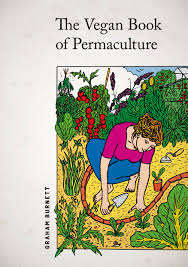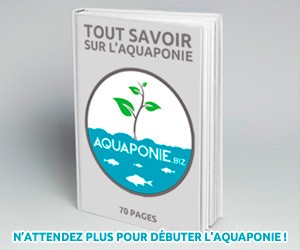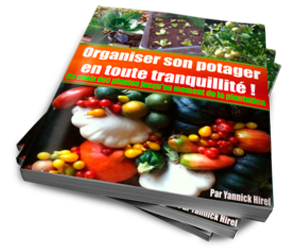The Vegan Book of Permaculture
-
Admirably every idea in this book is presented as the basis for our own improvisation and adaptation. This is an anarchist’s cookbook that rejects conformity while encouraging action, reflection and participation.
An omnivore such as myself finds a stricter gastronomic philosophy herein, but also an invitation to try a diversity of both novel and more familiar animal-free meals. There are instructions for everything from veggie curries and soups to acorn cuisine and leaf curd.
As the UN Food and Agriculture Organisation reports that livestock are responsible for 14.5% of man-made greenhouse gas emissions (the same amount produced by all the world’s cars, planes, boats and trains) we all need to take plant-based diets seriously.
This book is much more than plant-based recipes though, developing concepts from the author’s previous works, it provides an approachable design guide for personal and local action towards ecologically sound goals.
Organised in accordance with the spatial planning method of permaculture zoning, it identifies leverage points for more sustainable living in seven zones of activity. It then provides examples of how the author and others have implemented strategies and techniques in each area.
The book is also a new entry in the often hidden history of veganic advocacy for tree-based food production; a tradition that links forester Richard St Barbe Baker, campaigner Kathleen Jannaway and the forest gardener Robert Hart. It’s a utopian vision of abundant perennial polycultures shared by many permaculturists.
While the book explores a range of food production scales and methods, it is primarily horticultural rather than agricultural – the work of a gardener and forager, not a farmer. It points usefully towards restorative broadscale practices, the stock-free methods of Iain Tollhurst and the vegan permaculture calculations of Simon Fairlie, but the opportunity remains for a comprehensive work on a regenerative veganic agriculture.
Illustrated throughout by the author, it’s a pleasure to read and easy to refer back to. It will happily find a place on your bookshelf or kitchen worktop.
Both inspirational and practical, this book offers us an edible pathway to an ethical and tasty future. The fruit of decades of earthright living, its presentation of a low-impact delicious diet is relevant to all diners and might inform every plate we eat.
James Piers Taylor is a trustee of the Permaculture Association (Britain).
Further resources
Graham Burnett is also author of Permaculture: A beginner’s guide
Want to learn more about Permaculture? You can read a free copy of Permaculture magazine online by clicking HERE. You can subscribe to our digital issue for just £2.75 ($2.99) a quarter. A digital subscription also enables you to read and search our back issues but if you like the lovely paper edition please see SUBSCRIBE. Paper subscribers get our digital services free of charge!
http://www.permaculture.co.uk/book-reviews/vegan-book-permaculture
-
A propos de DPPLT :
Mon projet consiste à montrer aux gens que l'on peut bien vivre avec peu de moyen, vivre simplement et plus heureux. Mon idée est de donner des formations: Création de produits cosmétiques/ménagers avec des plantes (médicinales et mauvaise herbes), faire un potager en permaculture (agroforesterie, BRF, Broya), se nourrir avec les plantes sauvages, apprendre à observer la nature, à la comprendre, à ressentir. Pour pouvoir avancer dans le projet j'aurais besoin de vous car d'autres formations ouvrirons leurs portes pour toutes personnes... •Nous aurons besoins de pas mal de Klinkers, de pierres, terre argileuse - nous désirons faire une marre naturelle sans bâche (comme autrefois). •Des pelles, fourches bêches, bêches, petites pelles, chaises de jardin, arrosoirs, cuves à eau. •Des bâches en bon état pour étouffer l’herbe, en permaculture (plusieurs dimensions). •Sacs de jardinage (petits/grands) pour pouvoir mettre les herbes indésirables comme les orties, liserons,…etc. (les mettre aux containers de la commune) •Du bois pour la fabrication d’un abri et de toilette sèche. •Des copeaux en bois (non traité, sans pesticide) que cela soit des déchets ou autre peut important tant que c’est du naturel. Faites partager pour toucher le plus de monde. Je vous remercie de tout mon cœur pour votre aide et votre soutiens. Un tout grand merci à vous tous
-
-

permeric -
Hélas, nous sommes un site en français. Si tu ne proposes pas de description en français, cet article sera supprimé.
Je pense qu'ajouter ces infos en anglais sans explications ici n'a aucun intérêt.
Une réponse à “The Vegan Book of Permaculture”
Laisser un commentaire
Vous devez être connecté pour publier un commentaire.
Les opinions émises par les internautes n'engagent que leurs auteurs. Permaculteurs se réserve le droit de suspendre ou d'interrompre la diffusion de tout commentaire dont le contenu serait susceptible de porter atteinte aux tiers ou d'enfreindre les lois et règlements en vigueur, et décline toute responsabilité quant aux opinions émises, qui n'engagent que leurs auteurs.
-
-







Hélas, nous sommes un site en français. Si tu ne proposes pas de description en français, cet article sera supprimé.
Je pense qu’ajouter ces infos en anglais sans explications ici n’a aucun intérêt.